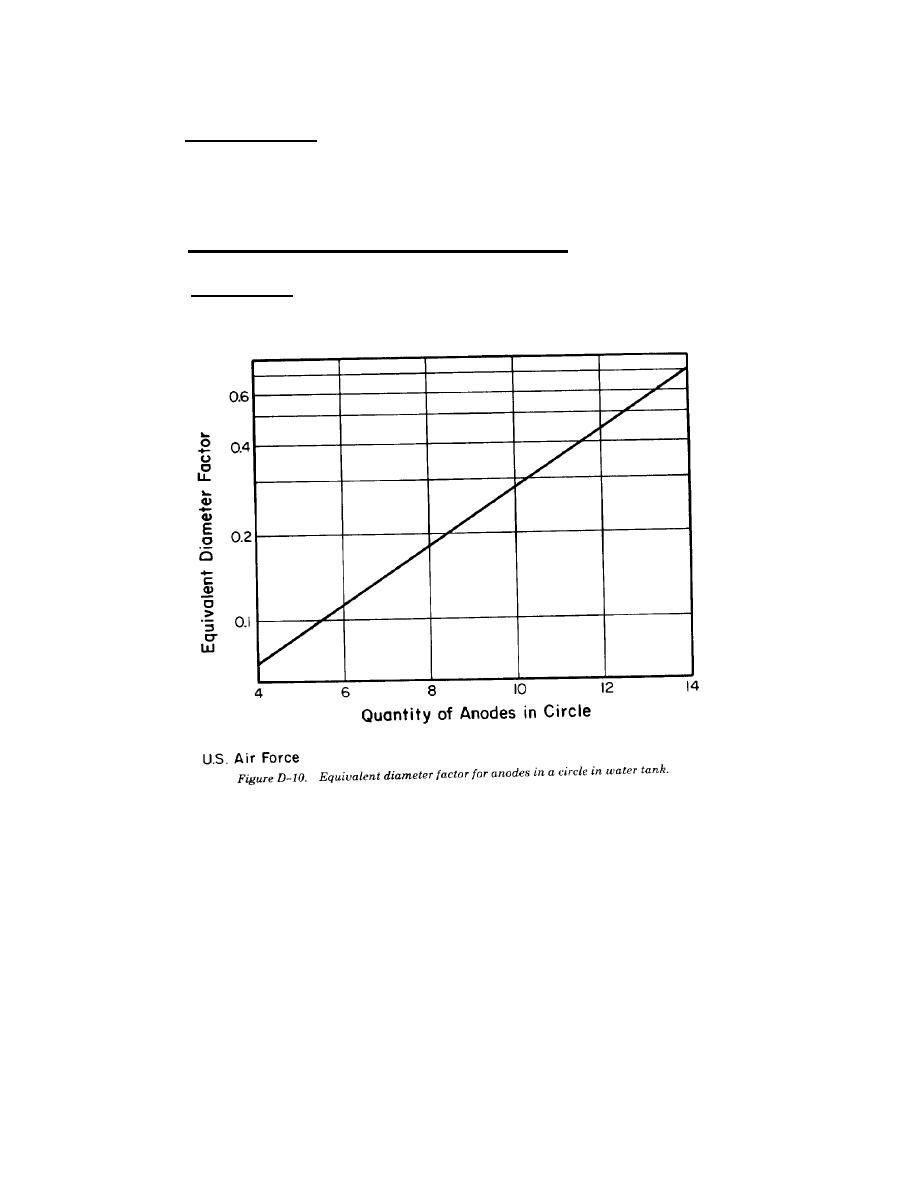
TM 5-811-7
(10)
Find the main anodes' resistance (substituting a for d in eq D-3):
0.012P log (D/a)
R'
,
L
where P = 4000 ohm-centimeters, D = 56 feet, L = 2 x 5 feet = 10 feet, and a = 44 x 0.275 = 12.1 feet (0.275
= equivalent diameter factor from curve, fig. D-10). Thus,
(0.102)(4000 ohm¢imeters) log (56 ft/12.1 ft)
R'
10 ft
48 log 4.628
R'
10
R = 3/19 ohms
(a) However, the L/d ratio of two 1 inch diameter, 60-inch long anodes in tandem is less than 100,
so the fringe factor must be used:
L/d = (2 x 60)/1.5
L/d=80 < 100.
(b) The fringe factor from figure D-4 corresponding to this L/d ratio is 0.95. Thus,
R (adjusted) = 3.19 x 0.95
R = 3.03 ohms.
(11) In designing an elevated water tank, the need for stub anodes must be justified.
(a) The main anode radius has been calculated to be 22 feet. The main anodes are spaced to provide
approximately the same distance from the sides and the bottom of the tank. The main anodes will protect a
D-18



 Previous Page
Previous Page
